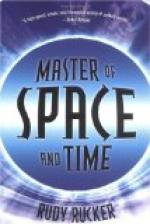[Illustration: GUGLIELMO MARCONI
Photographed in the uniform of an officer in the Italian army]
Marconi quickly found that the receiver was the least effective part of the existing apparatus. The waves spread in all directions from the sending station and become feebler and feebler as the distance increases. To make wireless telegraphy effective over any considerable distance a highly efficient and extremely sensitive receiving device is necessary. Some special means of detecting the feeble currents was necessary. The coherer was the solution. As early as 1870 a Mr. S.A. Varley, an Englishman, had discovered that when he endeavored to send a current through a mass of carbon granules the tiny particles arranged themselves in order under the influence of the electric current, and offered a free path for the passage of the current. When shaken apart they again resisted the flow of current until it became powerful enough to cause them to again arrange themselves into a sort of bridge for its passage. Thus was the principle of the coherer discovered.
An Italian scientist, Professor Calzecchi-Onesti, carried these experiments still further. He used various substances in place of the carbon granules and showed that some of them will arrange themselves so as to allow the passage of a current under the influence of the spark setting up the Hertzian waves. Professor E. Branly, of the Catholic University of Paris, took up this work in 1890. He arranged metal filings in a small glass tube six inches long and arranged a tapper to disarrange the filings after they had been brought together under the influence of the spark.
With the Branly coherer as the basis Marconi sought to make improvements which would result in the detector he was seeking. For his powder he used nickel, mixed with a small proportion of fine silver filings. This he placed between silver plugs in a small glass tube. Platinum wires were connected to the silver plugs and brought out at the opposite ends of the tube. It required long study to determine just how to adjust the plugs between which the powder was loosely arranged. If the particles were pressed together too tightly they would not fall apart readily enough under the influence of the tapper. If too much space was allowed they would not cohere readily enough. Marconi also discovered that a larger proportion of silver in the powder and a smaller amount between the plugs increased the sensitiveness of the receiver. Yet he found it well not to have it too sensitive lest it cohere for every stray current and so give false signals.




